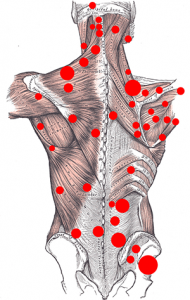 Statins, or cholesterol lowering medications, are among the most widely prescribed drugs in the world. “Big pharma” would put them in tap water if they could.
Statins, or cholesterol lowering medications, are among the most widely prescribed drugs in the world. “Big pharma” would put them in tap water if they could.
Regularly underdiagnosed in clinical trials is what is now termed statin myopathy, or muscle pain caused by statins. Underdiagnosed because in the real world people are on them for longer than in clinical trials and statin toxicity accumulates.
Clinical findings include muscle pain and weakness, mainly in the lower extremities, but also generalised overall muscle pain and weakness. Life-threatening muscle breakdown, known as rhabdomyolysis, and kidney failure can also occur, although rare.
The typical patient with a statin myopathy is usually older, and complains of pain and stiffness in the muscles of their thighs and buttocks. Historically, they have been taking a statin for less than a few months to control elevated cholesterol levels. Most patients will develop muscle symptoms within the first few weeks of taking the statin.
90% of doctors surveyed said they would prescribe statins to any individual that has slightly raised cholesterol and blood pressure, with no other risk factors.
High cholesterol does not equal heart attack. It is quite clear that cardiovascular disease is initiated and driven by ongoing inflammation; this has been known for many years. Cholesterol is only part of the issue, and elevations represent a component of the chronic inflammatory state. So, the focus should be inflammation reduction. Yet more patients are seen taking statins and suffering the consequences of lowered cholesterol production.
Cholesterol is fundamental in membrane function of every cell in your body. Reduced cholesterol infers poor nervous system signalling, depletion of mitochondrial respiratory function (energy production), and reduced delivery of fat substrate to muscle creating muscle pain.
Statin drugs cause three types of muscle conditions. The first type is the most common and consists of mild muscle aching, myalgia, which is generally reversible within weeks of discontinuing the drug. The second type consists of muscle pain and minor muscle weakness associated with mild muscle inflammation, observable on MRI as eodema. The muscle enzyme CPK is generally mildly elevated. This condition also generally reverses, but it may take several months to resolve.
The third type of muscle condition caused by statins is severe muscle inflammation and damage. There is general overall muscle pain involving all parts of the body, with associated severe muscle weakness. Even the cardiac muscles can be involved, though rarely. The CPK enzyme is markedly elevated, indicating that the muscles are severely damaged. Release of proteins from the damaged muscle cells collecting in the blood can damage the kidneys. This condition can lead to kidney failure and require dialysis.
Recommendation: If you are on cholesterol lowering medication and find yourself experiencing muscle pain, speak to your physician or chiropractor. The recommendation is to take a 6-week “statin holiday”, commence high doses of pure omega 3 fish oil, and reassess the goal.
Ask yourself: Why are you on the medication, really? What else are you doing to maintain your health? Are you looking at the whole picture? Did you know that cholesterol levels can be elevated with mental stress? Do you have high levels of inflammation in your body?
Have you tried a natural cholesterol health program? Download here.
